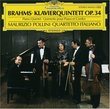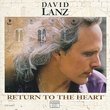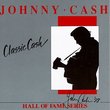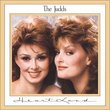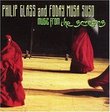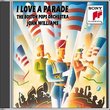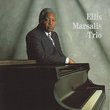| All Artists: Gabriel Faure, Roy Howat Title: Gabriel Fauré: Complete Works for Violin and Piano Members Wishing: 0 Total Copies: 0 Label: Arte Nova Classics Release Date: 5/10/2005 Genres: Dance & Electronic, Classical Styles: Chamber Music, Forms & Genres, Concertos, Historical Periods, Classical (c.1770-1830), Instruments, Strings Number of Discs: 1 SwapaCD Credits: 1 UPC: 723721103453 |
Search - Gabriel Faure, Roy Howat :: Gabriel Fauré: Complete Works for Violin and Piano
 | Gabriel Faure, Roy Howat Gabriel Fauré: Complete Works for Violin and Piano Genres: Dance & Electronic, Classical
|
Larger Image |
CD DetailsSimilarly Requested CDs
|
CD ReviewsRomantically Elusive Violin Sonatas Robin Friedman | Washington, D.C. United States | 07/17/2008 (5 out of 5 stars) "Gabriel Faure (1845 -- 1924) composed two sonatas for violin and piano at the opposite ends of his long compositional career. The sonata no 1 in A major op 13 dates from 1875 and is in a romantic, passionate voice. The sonata no. 2 in E minor opus 108 was composed in 1916-1917 when Faure had grown deaf. (He joined Beethoven, Smetena, and the song composer Robert Franz in the ranks of deaf composers.) The second sonata shares the passion of the earlier work but it is written in a harmonically more modern idiom. Faure had moved beyond his teacher, Saint-Saens, to become influenced by Debussy and Ravel who had become his contemporaries. Although there are several excellent recordings of Faure's violin sonatas, they are not as well-known as they deserve to be. This budget CD on Arte Nova is a good way to become acquainted with Faure's sonatas at little cost. Alban Beikricher, a young German violinist, performs with Roy Howat, a pianist and scholar who specializes in French music. Howat has also written the liner notes for this CD. Faure's two sonatas manage to convey both emotion and reserve. These sonatas are immediately accessible, but I listened to them many times while feeling that I was, somehow, still skimming the surface. The pieces tend to meld together and require concentration. The A major sonata was composed when Faure was deeply in love, and the music shows his passion. (The romance soon ended, unhappily for the composer.) The work is in four movements and begins immediately with a passionate outburst for the solo piano. The movement surges for both instruments and concludes in a large climax. Both the first and the second sonatas are blessed with lovely andante movements. The andante of the first sonata begins with sad, slow chords in the piano and develops into an intense, flowing and romantic theme. The third movement is a Mendelssohn-like scherzo with a lite opening theme and a more lyrical, emotive trio section. The finale returns to romantic intensity and features a lengthy running coda for both instruments. This sonata is passionate music clothed in grace. The three-movement second sonata is a more difficult work that still manages to capture the romanticism of the first sonata. The sonata makes greater use of counterpoint than does its predecessor, the themes are more tightly connected, and the harmonic language has expanded. The opening allegro is concentrated. The highlight of this sonata is the andante middle movement which is a work of great feeling and intensity. The finale begins lighter than the two earlier movements, but it also works to a large, climactic close. In addition to the two sonatas, this CD includes the four remaining short works Faure composed for violin and piano. These works include one of Faure's best-known compositions, the lovely and rolling Berceuse, together with an early Romance and short Andante, and a tiny work that Faure wrote as a sight-reading test for aspiring violinists. These works capture in short space the feel of the sonatas. The CD closes with transcriptions of Faure's Sicilenne and of a less-familiar piece, the Air de danse from incidental music for a play called Caligula. This CD offers a good way to get to know Faure's lovely yet enigmatic music for violin and piano. Robin Friedman " Lovely Faure Biblibio | 06/18/2007 (5 out of 5 stars) "How strange it is to here what have become flute classics played on the violin! It is clear that the violin was originally the instrument, but still... It is a fascinating comparison. Take Berceuse, for example. It has become a common piece to play on the flute, and it sounds lovely like that. Honestly, the violin doesn't sound as good playing it, but it's still pretty, and the uninterrupted flow is certainly a plus.
However, most of this album was new to me. The starting sonata is powerful and beautiful. While it can also be found on other CDs, certainly none beat this incredibly low price. The playing is just so beautiful, and this CD can be heard on repeat for hours. It is both appropriate for studying as well as just relaxing and listening to some music. Overall, this squeezes in everything a person would want on one CD. All of Faure's violin and piano works means that for those concerned with money, there will never be a need for purchasing another CD. It also means that for these people they will barely spend any money on what they already get. Honestly, it may just be a 4 1/2 rating, but it's a great CD that I love listening to and have enjoyed whole-heartedly. I assure you that you'll enjoy it just as well." |

 Track Listings (13) - Disc #1
Track Listings (13) - Disc #1